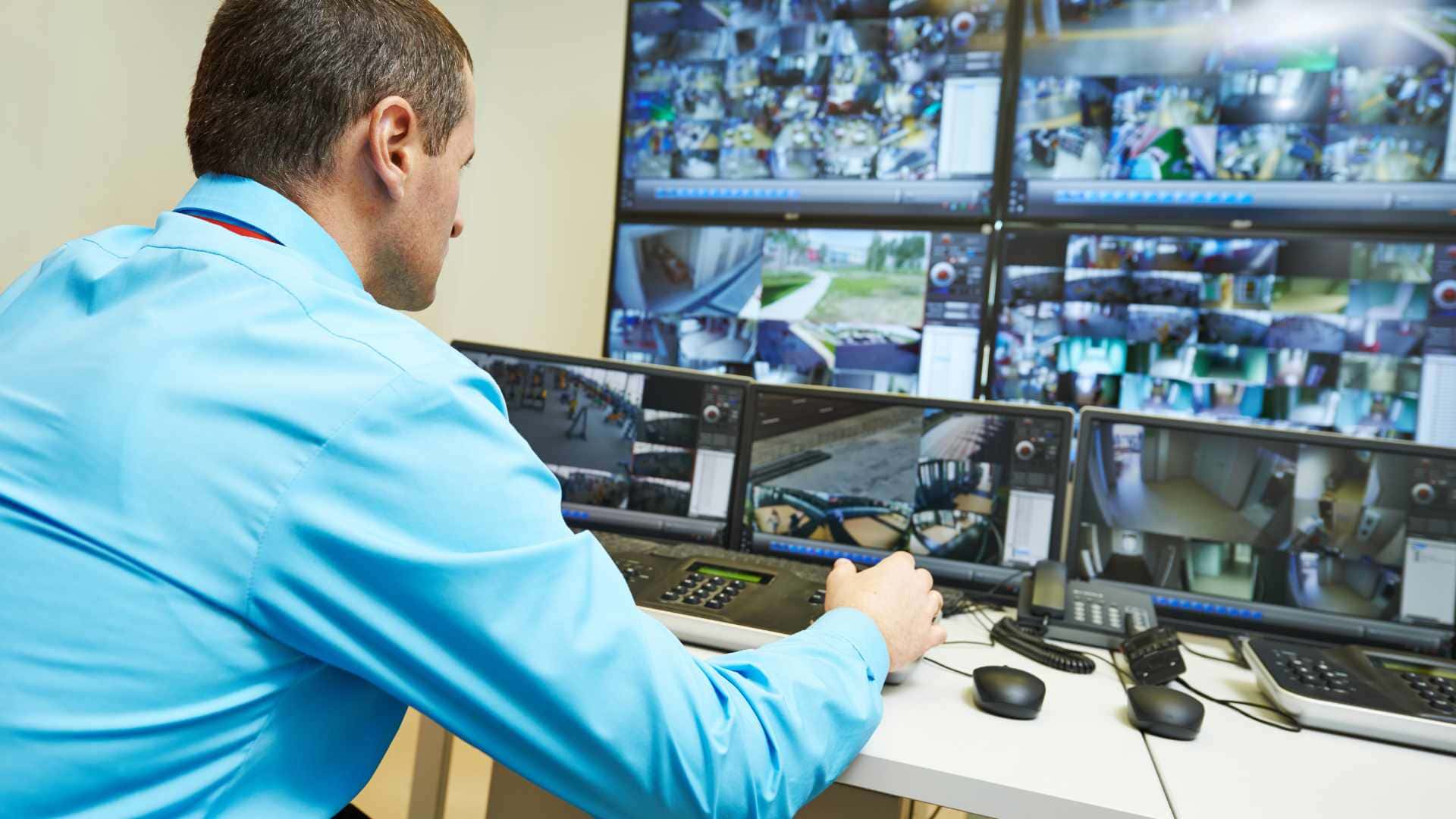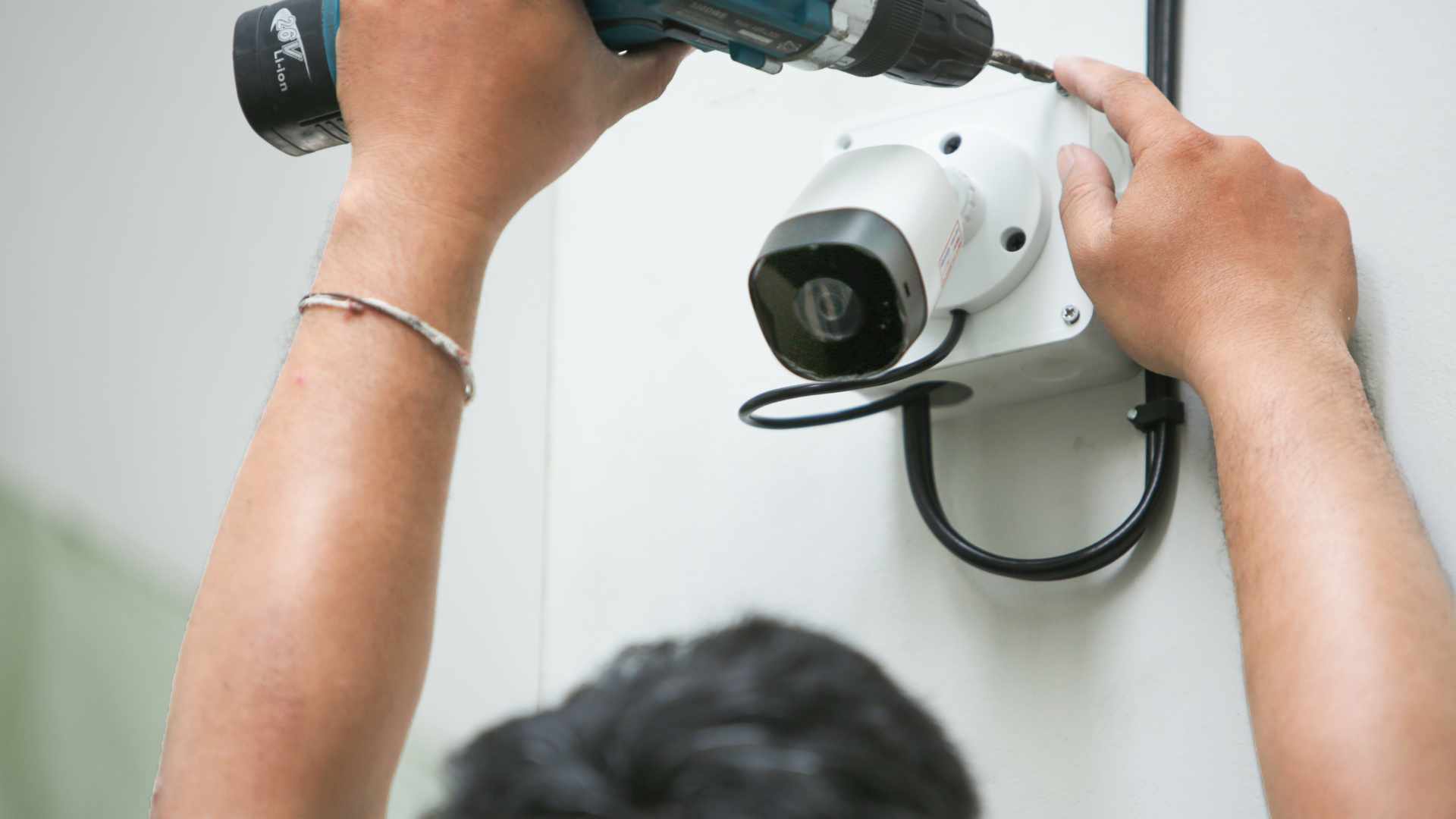Intercom systems are important to security measures because they are often the first line of defence in homes and businesses. These systems make it easier for people inside and outside of a property to talk to each other and make it much harder for people to get in without permission. This blog post will detail how intercoms can keep people from getting in without permission. They can also improve security by letting property owners and security staff check and control who comes in without physically meeting them.
We will discuss the complex technology that makes intercom systems work as well as a security tool. Intercoms are a strong way to manage entry points safely because they can verify audio and video and connect to advanced security and access control systems. Join us as we discuss how an intercom system can physically and mentally scare off potential intruders by making entry more difficult and dangerous. This keeps homes safe from unwanted visitors.
Ways Intercom Systems Systems Prevent Unauthorized Access
Integration With Comprehensive Security Systems
Access control systems, CCTV, and alarm systems are designed to work seamlessly with intercoms, creating a more effective and cohesive security system. Intercoms linked to access control systems ensure that only authorized individuals can gain entry. For example, integrating an intercom with an RFID entry system allows verification before granting access, significantly reducing the risk of unauthorized entry. Combining intercoms with CCTV systems allows for visual verification of visitors, enhancing security by enabling security personnel to visually confirm identities before allowing access, thereby deterring potential intruders. Integrating intercoms with alarm systems allows for immediate response to security breaches. When an intercom detects suspicious activity, it can trigger alarms and alert security personnel, ensuring a swift response to potential threats.
Real-Time Monitoring And Response
Real-time monitoring and response are critical for effective security management, and intercom systems enable these capabilities by providing immediate feedback and control. Intercom systems facilitate real-time communication between security personnel and visitors, allowing for quick verification and decision-making, which reduces the time window for unauthorized access attempts. Video intercom systems add an additional layer of security by allowing visitors to be identified visually, enabling security personnel to see and speak with visitors in real time and ensuring that only authorized individuals are granted access. Additionally, modern intercom systems can send automated alerts to security personnel when suspicious activity is detected, ensuring that any potential threat is addressed promptly and enhancing overall security.
Technological Advancements In Intercom Systems
Voice over IP (VoIP) technology allows intercom systems to transmit voice signals over IP networks, improving audio quality and enabling features like call forwarding and automatic answering. This technology ensures reliable communication and enhances the functionality of intercom systems. Introducing wireless intercom systems has eliminated the need for extensive wiring, making installation easier and more flexible. Wireless intercoms can be installed in various locations without the limitations of physical connections, providing comprehensive coverage. Additionally, smart intercom systems can be integrated with mobile devices, allowing users to monitor and control access remotely. For example, residents can see who is at their door and grant access from their smartphones, even when they are not at home.
Challenges And Limitations Of Intercom Systems
Static Noise And Interference
Static noise is one of intercom systems’ most frequent and frustrating issues. It can originate from various sources, including internal system components, microphones, or speakers. Common causes of static noise include:
- Loose Wires: Connections that are not secure can generate static.
- Power Issues: Fluctuations or instability in the power supply can lead to interference.
- Wear and Tear: Over time, normal wear on components can cause poor connections, leading to static.
- External Interference: External electronic devices can sometimes cause interference, even in closed systems.
To mitigate static noise, regular maintenance checks to ensure all connections are secure and replacing worn-out components can be effective.
Humming Noise
Another prevalent issue is a humming noise when using the intercom. This can indicate more severe underlying problems, typically related to wiring. The causes of humming noises often include:
- Faulty Wiring: Defective or damaged wires can produce a humming sound.
- Poor Connections: Loose or poor-quality connections can lead to humming noises.
- Ignoring these issues can result in more significant problems, including potential fire hazards. It’s crucial to address humming noises promptly by inspecting and repairing the wiring.
Power Supply Issues
Power supply problems can manifest in various ways, from causing static or humming noises to completely shutting down the intercom system. Signs that the power supply might be failing include:
- Increased Background Noise: More noticeable background noise can indicate power supply issues.
- System Shutdowns: A failing power supply might cause the system to shut down unexpectedly.
To prevent power supply issues, it’s essential to regularly check the power sources and ensure that the system is protected against power surges.
Technological Limitations
Compatibility And Integration
As intercom systems evolve, compatibility with existing infrastructure can be a challenge. Integrating new intercom technology with older security systems may require significant adjustments or upgrades, which can be costly and time-consuming. Ensuring that new intercom systems work seamlessly with existing security solutions can be complex, and upgrading systems to ensure compatibility can be expensive.
Range And Coverage
Its range and coverage area also limits the effectiveness of an intercom system. Ensuring comprehensive coverage in large buildings or extensive properties can take time and effort.
Wireless intercom systems have limitations in signal range, affecting communication in larger areas. Ensuring no dead zones within the coverage area requires careful planning and installation.
Environmental And Physical Challenges
Environmental conditions can significantly impact the performance of intercom systems. Weather conditions, temperature fluctuations, and physical obstructions can affect signal quality and system reliability.
- Weather Impact: Extreme weather conditions can damage outdoor components or affect signal quality.
- Physical Obstructions: Walls, floors, and other barriers can interfere with signal transmission.
Maintenance And Durability
Regular maintenance is critical to ensuring the longevity and reliability of intercom systems. Without proper maintenance, components can wear out over time, and the system’s performance can degrade. Regular use can also lead to wear and tear on system components.
Routine checks and maintenance are essential to keep the system functioning optimally.
Solutions And Best Practices
Regular Maintenance And Inspections
Conducting regular maintenance and inspections can prevent many common issues with intercom systems. This includes checking connections, inspecting wiring, and testing power supplies. Schedule regular inspections to identify and address potential issues before they become significant problems. Hiring professional services for regular maintenance can ensure that the system is always in top condition.
Investing In Quality Components
Investing in high-quality components and ensuring proper installation can reduce the likelihood of issues such as static noise and humming. Ensure that the system is installed by professionals who follow best practices. Use reliable and high-quality components to enhance system durability and performance.
Integration With Modern Technologies
To overcome compatibility challenges:
- Consider integrating intercom systems with modern technologies that offer better compatibility and more features.
- Invest in modern intercom systems that offer advanced features and better integration capabilities.
- Choose systems that can be easily upgraded or expanded to accommodate future technological advancements.
Conclusion
Intercom systems are very important for keeping homes and businesses safe because they make it easier for people to talk to each other and stop people who aren’t supposed to be there from getting in. They can check video and audio and connect to high-tech security and access control systems, which makes getting in harder and more risky. The idea of deterrence comes from psychology. It uses both mental and physical barriers, like the fear of penalties and the presence of safety measures, to stop people from doing bad things. Some important parts of deterrence are the risk of being caught, monitoring technology, and systems that work well with other security systems.
Intercoms, when integrated with video, alarm, and access control systems, empower homeowners and business owners with the ability to control and monitor access to their premises. This integration ensures that only authorised individuals can enter, significantly reducing the risk of unauthorised entry. The ability to visually identify callers enhances security, while the immediate response to suspicious behaviour, facilitated by alarm systems, provides a sense of control over security breaches.
Intercom devices are necessary in homes, businesses, and factories for safety reasons. They make it easier for people to talk to guests and ensure they are who they say they are, increasing safety. They also make it easier for departments to talk to each other and keep valuable assets and information safe by controlling who can access private areas. Intercom devices help workers in factories talk to each other clearly, which improves safety and cooperation.
Intercom systems have many problems, such as static noise, humming noise, power source problems, range and coverage, environmental and physical problems, and problems with upkeep and longevity. Loss of power, worn-out parts, and interference from outside sources can all cause static noise. A humming sound could mean serious problems underneath, like broken wires or bad connections. Problems with the power source can appear in several ways, such as more background noise or the device shutting down.
Technological limitations include the need to work with current infrastructure, limited range and coverage, problems with the environment and the body, and issues with upkeep and reliability. Investing in high-quality parts and hiring professionals can ensure the system is always in great shape. Regular maintenance and checks can also help prevent common problems. Adding new technologies to old audio systems can also help solve connectivity problems.
FAQs About Intercom Security System
How Do Intercom Systems Deter Unauthorised Access?
Intercom systems deter unauthorised access primarily through verification before entry. Intercoms ensure that only approved visitors can enter by requiring individuals to identify themselves and state their purpose for visiting. An intercom also acts as a psychological barrier, signalling to potential intruders that the property is monitored and controlled, thus increasing the risk of detection and discouragement from attempting unauthorised entry.
Can Intercom Systems Be Integrated With Other Security Measures?
Intercom systems can be seamlessly integrated with other security measures such as CCTV cameras, electronic door locks, and alarm systems. This integration creates a comprehensive security solution that allows for audio or visual verification, remote access control, and alerts if an unauthorised attempt is detected. This multi-layered approach significantly enhances security by combining verification, monitoring, and control.
What Are The Benefits Of Adding Video To Intercom Systems?
Adding video to intercom systems greatly enhances security by allowing property owners and security personnel to verify the identity of a person requesting visual access. Video intercoms provide a live feed, which is more reliable than audio-only verification, reducing the risk of impersonation or deceit. Additionally, the visual component can deter potential intruders, as they know their actions are being recorded, adding an extra layer of security.
Are Wireless Or Wired Intercom Systems More Effective In Deterring Unauthorised Access?
Both wireless and wired intercom systems effectively deter unauthorised access but offer different advantages. Wired systems are generally more reliable and secure, as they are less susceptible to interference and hacking. Wireless systems offer more installation flexibility and can be integrated with mobile devices for remote access and control. The choice between wired and wireless depends on the property’s specific security needs, infrastructure, and budget.
How Can Intercoms Be Used In Large Facilities Or Multiple Entry Points?
In large facilities or properties with multiple entry points, intercom systems can be networked or linked together to create a unified access control system. Depending on the layout, this setup allows central monitoring and communication from a single control room or multiple stations. Networked intercom systems ensure that all entry points are monitored and controlled, extending deterrence and security coverage throughout the property. This is vital for comprehensive access management and intrusion prevention.


